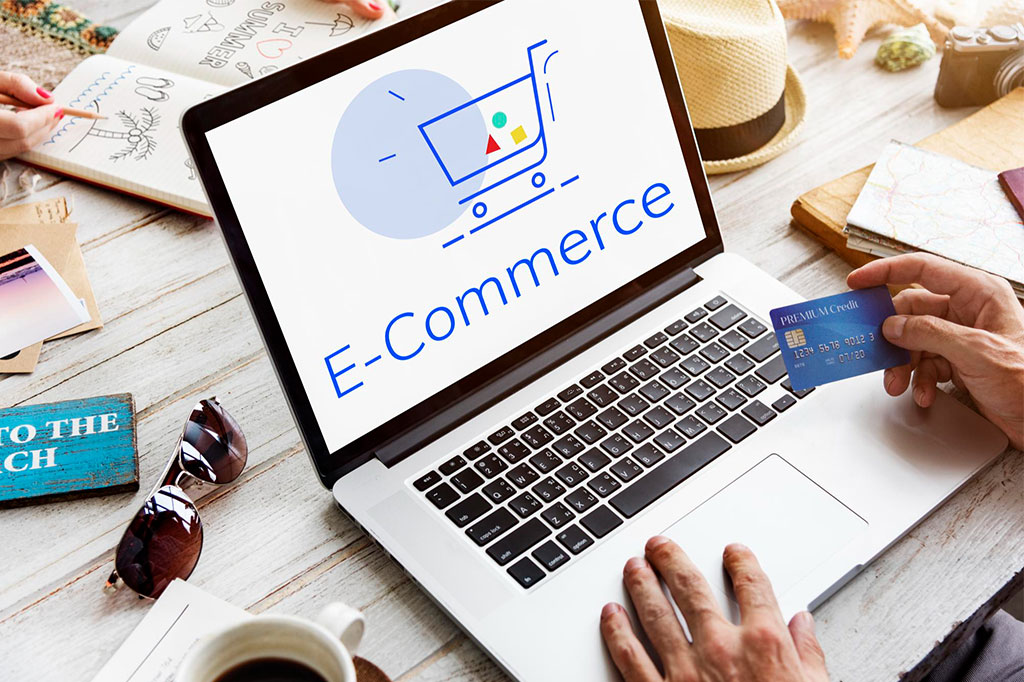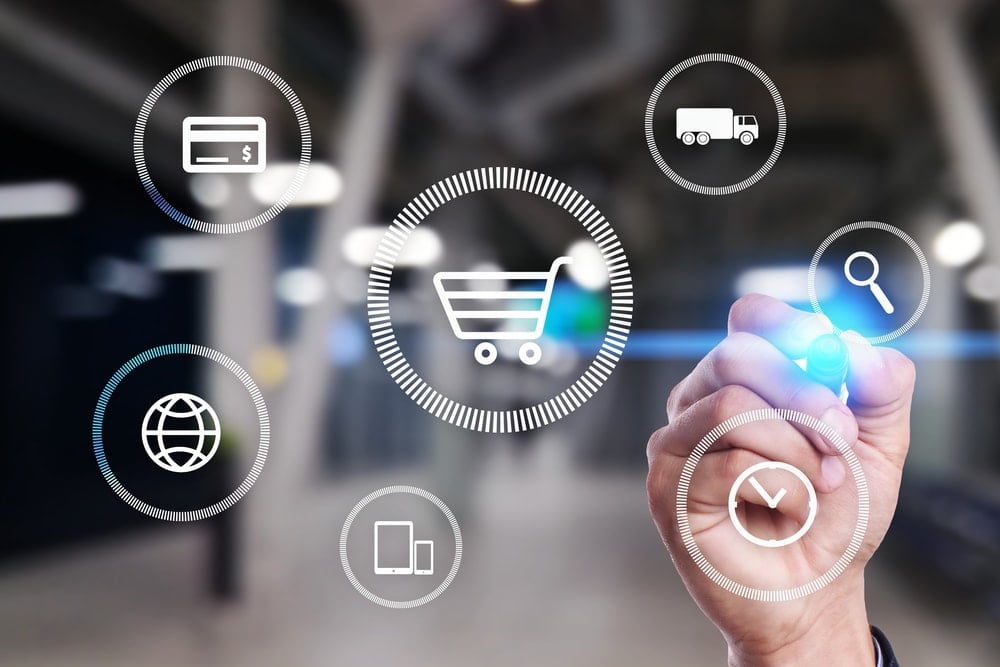The landscape of business-to-business (B2B) commerce is experiencing a profound, non-negotiable shift toward digitalization. No longer relegated to niche catalogs, B2B E-commerce Platforms have evolved into sophisticated, mission-critical digital hubs that manage complex relationships, customized pricing, multi-layered approvals, and global supply chains. By 2025, the demand for high-performance, scalable B2B platforms—which seamlessly integrate with Enterprise Resource Planning (ERP) systems and manage massive transaction volumes—is driving billions of dollars in enterprise software spending.
Digital Transformation: B2B E-commerce Platforms Advance Strategically

This exhaustive, 2000+ word analysis meticulously dissects the strategic advances and market dominance of B2B E-commerce Platforms. We explore the fundamental differences separating B2B from B2C commerce, detail the crucial technological capabilities required for platform success (including Headless Commerce and AI-driven personalization), and examine the complex financial and operational advantages gained by enterprises that fully embrace this digital transformation. Understanding this advanced ecosystem is the key to unlocking massive revenue streams and achieving digital resilience in the global enterprise market.
The Complexities Driving B2B Platform Evolution
The evolution of B2B platforms is driven by the necessity to replicate, and significantly improve upon, the intricate, long-standing relationships and processes inherent in enterprise transactions.
A. Core Differences Between B2B and B2C Dynamics
B2B commerce involves higher stakes, greater complexity, and different buyer motivations than consumer commerce.
A. Complex Pricing Structures: B2B platforms must manage highly variable, personalized pricing. This includes contract-specific discounts, volume tiers, negotiated rates, geographical pricing, and dynamic loyalty rebates—all synchronized in real-time with the ERP system.
B. Multi-User and Approval Workflows: Enterprise purchases rarely involve a single click. Platforms must support detailed organizational structures, including multiple buyers, delegated approval chains, spending limits, and departmental budget tracking—a necessity for compliance and cost control.
C. Custom Catalogs and Product Bundling: Suppliers often offer unique product specifications, custom configurations, or bundled service contracts specific to one buyer. The platform must dynamically display personalized catalogs and manage complex product configurators, unlike the static catalogs of B2C.
D. Integrated Procurement and Billing: Transactions often involve purchase orders (POs), invoicing, and credit terms rather than immediate payment. Platforms must integrate directly with the buyer’s internal procurement systems (e.g., Ariba, Coupa) and support multi-currency and multi-tax compliance.
B. The Demand for B2C-Grade User Experience
Despite the complexity, B2B buyers now expect the same intuitive, seamless, and fast user experience they enjoy in their consumer lives.
A. Intuitive Search and Navigation: Platforms must leverage AI-powered search (e.g., natural language processing, visual search) to help professional buyers quickly locate complex technical parts or highly specific SKU numbers within massive inventories.
B. Personalized Dashboards and Reordering: Buyers need personalized, comprehensive account portals showing their order history, saved carts (often for recurring bulk orders), technical documentation, and real-time shipment tracking, simplifying the complex reordering process.
Technological Architectures for Scalability and Integration

The need for speed, flexibility, and deep systems integration has driven the adoption of advanced platform architectures, particularly Headless Commerce.
1. Headless and Composable Commerce (High CPC)
This architecture separates the presentation layer (the frontend) from the back-end business logic and services, providing unparalleled agility.
A. Decoupled Frontend: By using a decoupled architecture, B2B companies can quickly create and deploy specialized customer experiences (e.g., a mobile app for field sales, a portal for distributors, a PWA for industrial buyers) without disrupting the core commerce engine.
B. Microservices Architecture: Platforms are built using modular, independent services (e.g., separate services for pricing, inventory, search, and user authentication). This composable approach allows enterprises to swap out or upgrade individual components (e.g., switching AI search engines) without rebuilding the entire platform.
C. API-First Strategy: Everything, from catalog data to customer data, is exposed via clean, standardized APIs (Application Programming Interfaces). This is crucial for deep, real-time integration with internal legacy systems (ERP, PIM, WMS) and external partner systems.
2. The Integration Mandate: ERP and PIM
The B2B platform’s ultimate value lies in its seamless, real-time integration with the core systems that manage operations and inventory.
A. ERP Synchronization: The platform must maintain two-way, real-time sync with the company’s ERP system (e.g., SAP, Oracle, NetSuite) for critical functions: confirming accurate inventory levels, validating complex pricing and discount rules, and initiating order fulfillment processes. This synchronization is the backbone of efficiency.
B. Product Information Management (PIM): A robust PIM system is essential for managing the vast and complex technical data (specifications, dimensions, compliance certificates, schematics) required for B2B products. The PIM acts as the single source of truth, feeding accurate data to the commerce platform and all other sales channels.
AI and Automation: Driving Efficiency and Personalization
Advanced platforms are leveraging Artificial Intelligence and automation to reduce operational costs and create hyper-personalized buying experiences, mirroring the B2C shift.
1. AI for Price and Catalog Optimization
A. Dynamic Pricing and Quoting: AI models analyze real-time factors (inventory level, order volume history, competitor data, and customer loyalty tier) to generate dynamic, personalized price quotes instantly, bypassing the need for manual sales intervention in many cases.
B. Predictive Ordering and Inventory: AI analyzes a buyer’s historical purchase patterns, seasonality, and consumption rates to predict their next order requirement, proactively suggesting purchase lists or scheduling automated reorders, increasing customer stickiness and reducing stock-outs.
C. Visual Search for Parts: Leveraging image recognition AI, B2B platforms allow maintenance technicians or buyers to upload a photo of a broken part, and the system instantly identifies the SKU, checks inventory, and facilitates the reorder, dramatically reducing downtime.
2. Automation in Sales and Service
A. Automated Order Processing: Using Robotic Process Automation (RPA) and workflow tools, platforms automate the entire order lifecycle from PO receipt to invoice generation and submission to the buyer’s procurement system, eliminating costly manual data entry errors.
B. Intelligent Chatbots and Virtual Assistants: AI-powered chatbots handle tier-1 support for common B2B queries (e.g., “What is the warranty period for product X?,” “Where is my shipment?”). These assistants are trained on technical documentation, freeing up human sales engineers for complex consultative tasks.
Strategic Advantages and Financial Impact
For the global enterprise, the investment in advanced B2B platforms yields significant strategic advantages beyond simple sales.
1. Market Penetration and Expansion
A. Global Market Access: A unified B2B platform with multi-language, multi-currency, and robust tax compliance capabilities allows manufacturers to instantly open new distribution channels and enter new global markets without the costly setup of physical sales offices.
B. Channel Conflict Resolution: Platforms can be configured to manage complex sales channel rules—direct sales, distributors, authorized dealers—providing different pricing and access rules to each segment, thus mitigating channel conflict and optimizing profit margins.
C. Enabling Self-Service: Shifting transactions from expensive, labor-intensive sales calls to efficient digital self-service lowers the cost-to-serve for existing customers, freeing up sales teams to focus exclusively on high-value new account acquisition and complex solution selling.
2. Compliance and Risk Mitigation (High CPC)
A robust B2B platform is a powerful tool for enterprise governance.
A. Audit Trails and Regulatory Compliance: Platforms create a comprehensive, immutable digital audit trail for every transaction, quote, and interaction, which is essential for financial auditing, tax compliance, and managing global trade regulations—a major driver for spending on B2B GRC (Governance, Risk, and Compliance) software.
B. Contract Management and Enforcement: The platform digitally enforces complex contract terms, ensuring that negotiated pricing, delivery terms, and product usage restrictions are applied consistently across all orders, eliminating human error and legal risk.
Conclusion
The advancement of B2B E-commerce Platforms by 2025 signifies that digital commerce is no longer a peripheral channel but the central nervous system of global enterprise trade. These platforms represent complex, highly customized digital infrastructures designed not just to process orders, but to efficiently manage billions of dollars in highly nuanced, long-term B2B relationships. The core mandate for successful platforms is seamless, real-time integration—powered by API-First and Headless/Composable Architectures—with the enterprise’s essential systems like ERP and PIM, ensuring data accuracy in pricing, inventory, and order fulfillment.
This strategic technological imperative is the driving force behind the exceptionally high CPC in the B2B digital ecosystem. Advertisers, including major ERP vendors (SAP, Oracle), specialized Headless Commerce providers, AI-driven pricing software developers, and B2B digital procurement consultants, are competing intensely for the attention of enterprise decision-makers. Content that provides authoritative, solution-oriented guidance on topics such as “ERP-to-Commerce Integration Best Practices,” “ROI of B2B Headless Commerce,” or “Implementing AI for Dynamic B2B Pricing” captures this high-value traffic.
Ultimately, the competitive advantage for manufacturers and distributors now hinges on their ability to transition from manual, relational sales to automated, hyper-personalized digital self-service. By leveraging AI for dynamic pricing and predictive ordering, and by providing a B2C-grade experience layered over B2B complexity, these platforms drastically lower the cost-to-serve, maximize sales efficiency, and build the resilient, globally scalable digital infrastructure required to dominate the future of industrial commerce.












